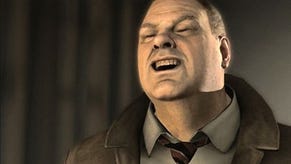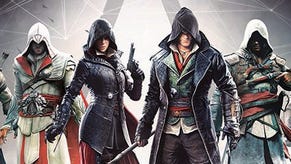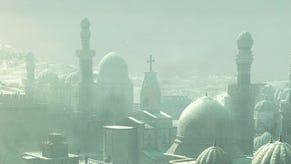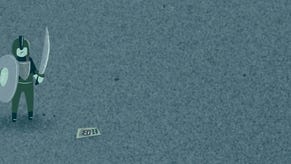Assassin's Creed II
Death in Venice.
If it all seems a little bit too Apple Store, there are hints all is not as it appears. You have no reason to trust these guys - who claim to be working for the contemporary Assassins - while their nominal leader, a preening Danny Wallace lookalike, is a bit rude to you for no good reason. Early on, in his escape from his captors in the first game, Desmond gets to do a spot of fighting of his own at last - so hopefully he'll get to bop Nasty Danny Wallace on the chin at some point.
But, for all this background 21st century conspiracy gunk, the spine of the AC series, this is very much Ezio's game. His choice of mission types jumps from the first game's five-ish to around 15, many of which will evolve into other forms as they go along - so the plague of repetitive mini-games shouldn't be troubling us again.
Side quests are picked up from folk on the streets as and when you like, and now have a benefit beyond eventual progression or collector-mania: cash. Ezio's forever in need of the stuff, to spend on doctor's bills, armour repairs, new weapons and clothing, and even paintings with which to decorate his Villa, a sprawling home/base he inherits a few hours in. Cash is easy enough to come by - gained from missions, from hidden chests, and from pickpocketing folk in the streets.
It's almost an RPG. What stops it is that there isn't really much choice in terms of upgrades - just gradual replacement of old things with better things. Though he does, to some extent, get to pick and choose what weapon types he wields on a given mission - even if the definition of 'assassin' is perhaps stretched by running around with a big hammer. [Stretched in a good direction, if you ask me. - Hammer Ed]

So, a little bit GTA, a little bit Elder Scrolls - but, most importantly, a sense of stuff to do, stuff worth doing, rather than just trying to summon a sense of pride about a completion percentage on a menu screen. And even that sense of completionism is overhauled, in the form of aforementioned Villa. It's Ezio's home, but it's also a reflection of how he's doing. Any armour and weapons he's bought are on display there, while his bedroom is filled with portraits of men of import he's assassinated.
Outside the main building are stores, taverns and even a brothel - he can pour cash into any of these to renovate them, which both makes them more impressive and adds a bunch of handholds to their exteriors, so he can climb them in search of secrets. The more he renovates, the better the place looks and the more it comes alive - so it's a living reflection of how well you're doing. Oh, and Leonardo da Vinci eventually turns up and starts hanging around. Apparently he's there to help, not just to sponge off your riches.
It's a game that's both familiar and immediately, obviously bigger and fresher. It's quite the accomplishment in so short a time. Has it had long enough to gestate, though? "When you're creating stuff it's never enough - certainly, you are always begging for more time," says Sebastian Puel. "Sometimes I surprise myself with the amount of stuff that has been done to the game. I'm really proud of this one."
Assassin's Creed II is due out for PS3 and Xbox 360 on 20th November and PC in Q1 2010.
















